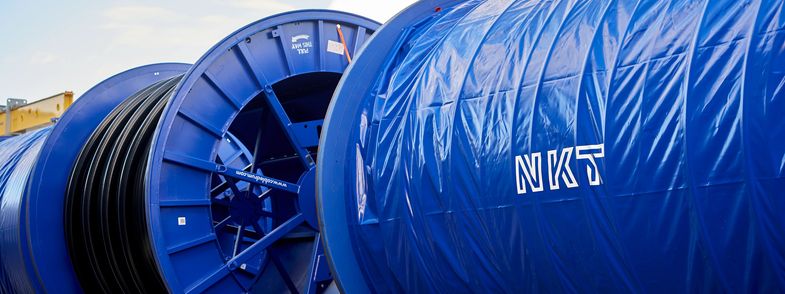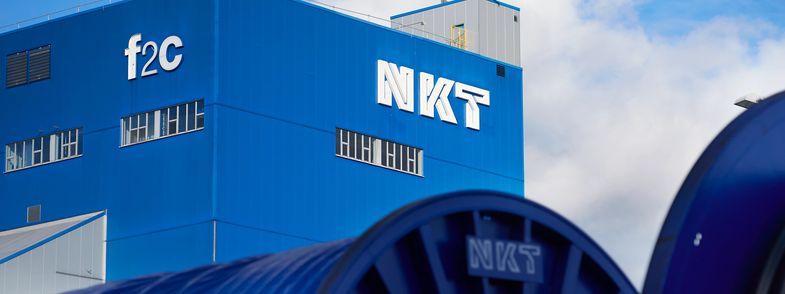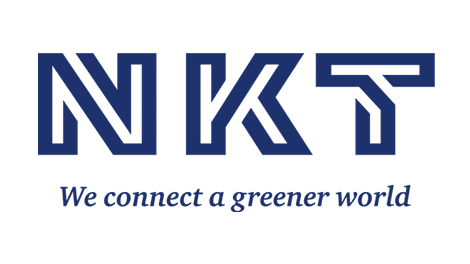NKT – NKT signs large AC onshore order with Belgium’s TSO to support grid upgrades
NKT will deliver 545 km of 70 kV, 110 kV, and 150 kV AC onshore power cables to transmission system operator, Elia Transmission Belgium.
As electricity supply and demand increases across Europe, the underlying grid needs significant upgrades and modernization to keep up. According to the IEA, around 40 percent of Europe’s grid is over 40 years old, which is just ten years short of its typical lifespan.
In Belgium, electricity consumption is expected to rise by 50% by 2032 while renewable energy sources are adding more power to the system. In 2023, Belgium generated a record-breaking 21.5 TWh (a 23% increase compared with 2022) from wind and solar generation, making up 28% of the country’s electricity mix.
As part of Elia Transmission Belgium’s (ETB) Federal Development Plan for 2024-2034 to strengthen Belgium’s transmission grid, NKT will supply 545km of high-voltage power cables. The order has been received under an existing framework agreement between NKT and ETB and is adding to an order of 72km of 380kV AC onshore power cables recently awarded under the same agreement.
– Electricity grids are the backbone of modern society, so upgrading and modernizing them to support future demand and loads is vital. We are proud of our long-term relationship with Elia Transmission Belgium to support their efforts to upgrade the Belgian grid. This is one of the largest orders in the segment 70 kV and 150 kV AC onshore NKT has ever received and shows the importance of the lower high-voltage levels in the transmission grid, says Lukas Sidler, EVP, HV Solutions Cologne.
– With this order, we take an important step towards meeting our customers’ demands. Each step that will be taken in the coming years will be crucial and enormous. The broad scope of this order is the best testimony to this. We are therefore delighted with our continued collaboration with NKT, a partner with whom we are used to working with and who have demonstrated unfailing reliability and expertise, says Frederic Dunon, CEO Elia Transmission Belgium.


The power cables will be produced at NKT’s Cologne, Germany, and Velke Meziříčí, Czech Republic, factories, with delivery and installation planned from 2025-2027.
Demand for medium- and high-voltage power cables is generally expected to continue to grow rapidly as transmission and distribution system operators upgrade and expands grids across Europe. To satisfy this growing demand, NKT is investing in additional production capacity and capabilities at its medium- and high-voltage factories in Denmark, Sweden, Germany, Portugal and Czech Republic. The new capacity will be progressively operational from 2025-2027.
Key facts:
- 545 km of 70 kV, 110 kV, and 150 kV power cables
- The power cables will be delivered throughout 2025-2027
- ETB is Belgium’s national TSO and a part of Elia Group
- ETB operates the electricity transmission network in Belgium, managing the high-voltage transmission grid which comprises close to 9,000 km of overhead lines and underground cables.
SourceNKT
EMR Analysis
More information on NKT: See the full profile on EMR Executive Services
More information on Claes Westerlind (President and Chief Executive Officer, NKT): See the full profile on EMR Executive Services
More information on Lukas Sidler (Members of the Global Leadership Team, Executive Vice President, Head of HV Solutions Cologne, NKT): See the full profile on EMR Executive Services
More information on Elia Transmission Belgium: https://www.elia.be/en/ + Elia Transmission Belgium operates the electricity transmission network in Belgium. We manage the Belgian high-voltage transmission grid (30 kV to 400 kV), which comprises over 8,802.50 km of overhead lines and underground cables. We preserve a service reliability level of 99.99 % and ensure that production and consumption are balanced around the clock. In so doing, we provide society with a robust power grid, which is important for socioeconomic prosperity.
Elia Transmission Belgium is part of Elia Group, one of the five largest transmission system operators in Europe. Elia Group supplies 30 million end users with electricity through its subsidiaries in Belgium (Elia) and in the north and east of Germany (50Hertz). In addition to its activities as a transmission system operator, Elia Group provides consulting services to international customers through its subsidiary Elia Grid International. In recent years, the Group has launched new non-regulated activities such as re.alto (the first European digital marketplace for the exchange of energy data) and WindGrid (which focuses on the development of offshore electricity grids in Europe and beyond). Elia Group is a listed company whose core shareholder is the municipal holding company Publi-T.
More information on Catherine Vandenborre (Chairman and Chief Financial Officer, Elia Transmission Belgium): https://www.elia.be/en/about-elia/corporate-governance/corporate-bodies + https://www.linkedin.com/in/catherine-vandenborre-0034702a/
More information on Frédéric Dunon (Co-Chairman and Chief Executive Officer, Elia Transmission Belgium): https://www.elia.be/en/about-elia/corporate-governance/corporate-bodies + https://www.linkedin.com/in/frederic-dunon-1279495/
More information on IEA (International Energy Agency): https://www.iea.org + The IEA is at the heart of global dialogue on energy, providing authoritative analysis, data, policy recommendations, and real-world solutions to help countries provide secure and sustainable energy for all.
The IEA was created in 1974 to help co-ordinate a collective response to major disruptions in the supply of oil. While oil security this remains a key aspect of our work, the IEA has evolved and expanded significantly since its foundation.
Taking an all-fuels, all-technology approach, the IEA recommends policies that enhance the reliability, affordability and sustainability of energy. It examines the full spectrum issues including renewables, oil, gas and coal supply and demand, energy efficiency, clean energy technologies, electricity systems and markets, access to energy, demand-side management, and much more.
Since 2015, the IEA has opened its doors to major emerging countries to expand its global impact, and deepen cooperation in energy security, data and statistics, energy policy analysis, energy efficiency, and the growing use of clean energy technologies.
More information on Dr. Fatih Birol (Executive Director, International Energy Agency): https://www.iea.org/contributors/dr-fatih-birol + https://www.linkedin.com/in/fatih-birol/
EMR Additional Notes:
- AC (Alternating Current) & DC (Direct Current) & UC (Universal Current):
- Direct current (DC) is an electric current that is uni-directional, so the flow of charge is always in the same direction. As opposed to alternating current, the direction and amperage of direct currents do not change. It is used in many household electronics and in all devices that use batteries.
- Direct current has many uses, from the charging of batteries to large power supplies for electronic systems, motors, and more. Very large quantities of electrical energy provided via direct-current are used in smelting of aluminum and other electrochemical processes.
- in contrast to AC power, DC power is entirely made up of active power, meaning that there are almost no losses due to the capacitance of wires when DC power travels long distances. In fact, high voltage AC transmission systems have losses of 7% to 15% with aboveground transmission.
- Alternating Current is used in homes as Direct current can not be easily stepped up or stepped down with the help of transformers whereas alternating current can easily be converted from low voltage to high voltage or vice-versa with the help of transformers.
- “UC” is used for “Universal Current”, that translates to “either DC or AC”. So a 24 V UC input can accept either 24 V AC or 24 V DC.
- Transmission System Operator (TSO):
- A Transmission System Operator (TSO) is an entity entrusted with transporting energy in the form of natural gas or electrical power on a national or regional level, using fixed infrastructure. The term is defined by the European Commission.
- Distribution System Operators (DSO):
- Entities responsible for distributing and managing energy from the generation sources to the final consumers. Digitalisation is the key to securing the DSO model, which requires investments in automation, smart meters, real-time systems, big data and data analytics.
- A DNO (Distribution Network Operators) already performs much of the tasks that a DSO does, but there are differences. A conventional distribution network is not an active but a reactive or passive network. Passive distribution networks are designed to accept bulk power from transmission system and distribute it, down the network, to consumers.
- Grid, Microgrids, DERs and DERM’s:
- The power grid is a network for delivering electricity to consumers. The power grid includes generator stations, transmission lines and towers, and individual consumer distribution lines.
- The grid constantly balances the supply and demand for the energy that powers everything from industry to household appliances.
- Electric grids perform three major functions: power generation, transmission, and distribution.
- A microgrid is a small-scale power grid that can operate independently or collaboratively with other small power grids. The practice of using microgrids is known as distributed, dispersed, decentralized, district or embedded energy production.
- Smart Grid is any electrical grid + IT at all levels . Micro Grid is a group of interconnected loads and DERs (Distributed energy resources) within a clearly defined electrical and geographical boundaries witch acts as a single controllable entity with respect to the main grid.
- Distributed energy resources (DERs) are small-scale electricity supply (typically in the range of 3 kW to 50 MW) or demand resources that are interconnected to the electric grid. They are power generation resources and are usually located close to load centers, and can be used individually or in aggregate to provide value to the grid.
- Common examples of DERs include rooftop solar PV units, natural gas turbines, microturbines, wind turbines, biomass generators, fuel cells, tri-generation units, battery storage, electric vehicles (EV) and EV chargers, and demand response applications.
- Distributed energy resources management systems (DERMS) are platforms which helps mostly distribution system operators (DSO) manage their grids that are mainly based on distributed energy resources (DER).
- DERMS are used by utilities and other energy companies to aggregate a large energy load for participation in the demand response market. DERMS can be defined in many ways, depending on the use case and underlying energy asset.
- Kilowatt (kW):
- A kilowatt is simply a measure of how much power an electric appliance consumes—it’s 1,000 watts to be exact. You can quickly convert watts (W) to kilowatts (kW) by diving your wattage by 1,000: 1,000W 1,000 = 1 kW.
- Megawatt (MW):
- One megawatt equals one million watts or 1,000 kilowatts, roughly enough electricity for the instantaneous demand of 750 homes at once.
- Gigawatt (GW):
- A gigawatt (GW) is a unit of power, and it is equal to one billion watts.
- According to the Department of Energy, generating one GW of power takes over three million solar panels or 310 utility-scale wind turbines
- Terawatt (TW):
- One terawatt is equal to 1,000,000,000,000 watts.
- The main use of terawatts is found in the electric power industry.
- According to the United States Energy Information Administration, America is one of the largest electricity consumers in the world using about 4,146.2 terawatt-hours.


